Car Accident Knee Surgery Settlement Guide – Injury Lawyer Update
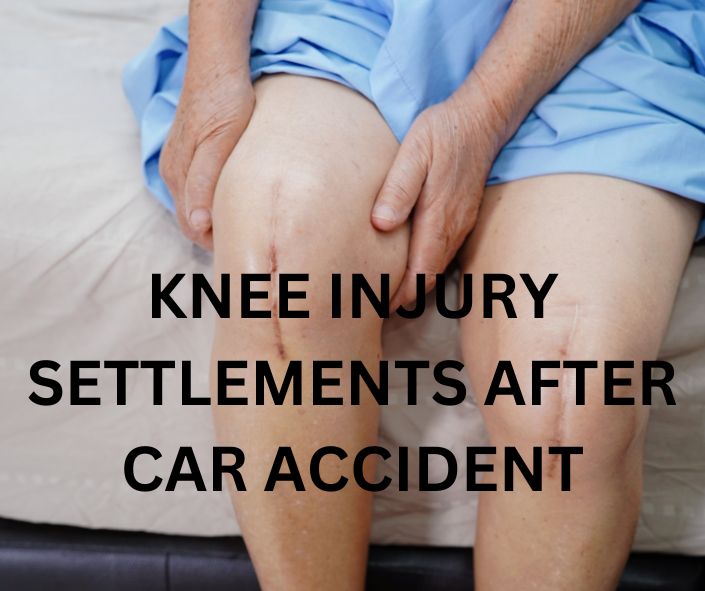
Author: 30klife January 19, 2024
Knee injuries are a common yet often overlooked consequence of car accidents. The sudden impact and force can lead to severe knee trauma, sometimes necessitating surgery for proper healing and function restoration. Understanding the financial and legal aspects of securing a settlement for knee surgery post-accident is crucial for anyone facing this challenging situation. This blog aims to guide you through the process of understanding and maximizing your settlement, with a focus on the nuances of knee surgery as a result of a car accident.
Knee Injury Settlements & Verdicts in Texas Car Accidents
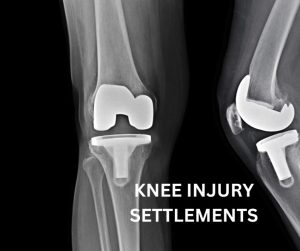 Knee injuries in car accidents can range from ligament tears and fractures to dislocations and cartilage damage. These injuries often occur during frontal collisions or side impacts, where the knees forcefully hit the dashboard or door. Among the most common are Anterior Cruciate Ligament (ACL) tears, meniscus tears, and patella fractures.
Knee injuries in car accidents can range from ligament tears and fractures to dislocations and cartilage damage. These injuries often occur during frontal collisions or side impacts, where the knees forcefully hit the dashboard or door. Among the most common are Anterior Cruciate Ligament (ACL) tears, meniscus tears, and patella fractures.
The requirement for surgery depends on the injury’s severity. Surgical intervention is often necessary for torn ligaments, displaced fractures, or injuries that fail to respond to conservative treatment. If you’ve sustained a knee injury in a car accident, it’s crucial to document every symptom and medical consultation. This documentation will be pivotal in establishing the extent of your injuries and their link to the accident.
Average Compensation Payout For Knee Injuries in Texas
Determining an average compensation payout for knee injuries in Texas is complex due to the variability of individual cases. Knee injury settlements can vary widely based on several factors, including the severity of the injury, the specific circumstances of the accident, medical costs, and the impact on the victim’s life and livelihood. However, I can provide a general overview of what influences these payouts:
- Severity and Type of Knee Injury: Common knee injuries from accidents include ligament tears (such as ACL or MCL tears), fractures, meniscus tears, and dislocations. The more severe the injury, which may require extensive surgery or lead to chronic pain or disability, the higher the potential settlement.
- Medical Expenses: This includes all costs related to the treatment of the knee injury, such as surgery, hospital stays, physical therapy, medications, and any future medical treatments or surgeries needed.
- Lost Wages and Earning Capacity: If the injury results in time off work or impacts the victim’s ability to earn a living in the future, this lost income is factored into the settlement.
- Pain and Suffering: Compensation for pain and suffering considers the physical pain and emotional trauma caused by the injury. This is often the most subjective component and can vary significantly.
- Long-Term Effects: If the knee injury leads to long-term health issues, such as chronic pain, limited mobility, or arthritis, this can increase the settlement amount.
- Insurance Policy Limits: The at-fault party’s insurance coverage can also impact the settlement amount, as these limits may cap the maximum payout.
- Legal Representation: Having an attorney can influence the settlement amount, as they can negotiate more effectively with insurance companies and help in accurately valuing the claim.
Given these variables, compensation for knee injuries in Texas can range from moderate sums for less severe injuries to much larger amounts for serious cases involving extensive surgery or long-term disability. Minor knee injuries might settle for a few thousand dollars, while serious injuries requiring surgery and long-term rehabilitation can result in settlements or awards in the tens or hundreds of thousands, and sometimes more.
For a more accurate estimate based on the specifics of a knee injury case in Texas, it’s advisable to consult with a personal injury attorney. They can evaluate the case based on the injury’s severity, associated costs, and impact on quality of life, and provide a tailored estimate. Legal expertise is often crucial in ensuring that victims receive fair compensation that accurately reflects the full extent of their injuries and losses.
Proving Up a Knee Injury In a Lawsuit
Proving up a knee injury in a lawsuit, especially one resulting from an accident, involves several key steps to establish the extent of the injury, its impact on your life, and its connection to the incident in question. Here’s a general guide on how to go about it:
- Medical Documentation: The foundation of proving a knee injury is comprehensive medical documentation. This includes initial medical reports from when the injury was first treated, results of diagnostic tests (such as X-rays, MRIs, or CT scans), records of treatment received (including surgery, physical therapy, and any other medical interventions), and documentation of any ongoing medical needs. Medical records should clearly link your knee injury to the accident.
- Expert Testimony: Often, it’s beneficial to have a medical expert, such as an orthopedic surgeon or a physician specializing in knee injuries, provide testimony. They can explain the nature of the injury, the necessity, and extent of the treatment required, and the prognosis. They can also give an expert opinion on how the injury is consistent with the accident.
- Personal Documentation: Keep a detailed journal of your experience with the knee injury. Document your pain levels, limitations in daily activities, the impact on your quality of life, and any changes in your ability to work. This personal account can be valuable in demonstrating the injury’s impact on your day-to-day life.
- Witness Testimony: Statements from family members, friends, or colleagues who can attest to how the injury has affected your life can also be persuasive. They can provide insights into your life before and after the injury, offering a comparative view of its impacts.
- Evidence from the Accident: If the knee injury is the result of an accident, such as a car crash or a slip and fall, evidence from the accident scene can be crucial. This may include photographs of the scene, police reports, witness statements, and any other relevant information that helps establish the circumstances of the accident.
- Employment Records: If the injury has impacted your ability to work, employment records detailing missed workdays, reduced hours, or changes in job responsibilities due to the injury can support your claim for lost wages or diminished earning capacity.
- Economic Impact Analysis: Sometimes, especially in cases of severe injuries leading to long-term or permanent disability, an economic impact analysis conducted by a financial expert can be useful. This analysis can project future lost earnings and costs of ongoing medical care.
- Legal Representation: Consider hiring a personal injury attorney experienced in knee injury cases. They can guide you through the legal process, help gather and present evidence effectively, and ensure that all aspects of your injury and its impact are adequately represented and accounted for in your claim.
In a lawsuit, the burden of proof lies with you, the plaintiff, to demonstrate the extent and cause of your knee injury. Comprehensive and well-organized documentation, along with expert testimony, is key to building a strong case.
The Cost of Knee Surgery and Medical Care
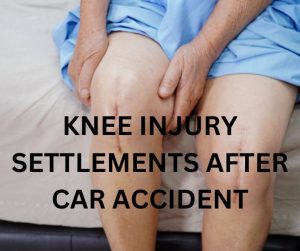 Knee surgery can be a costly affair, encompassing not just the surgery itself but also pre-operative consultations, post-operative care, physical therapy, and potentially long-term rehabilitation. The costs can escalate quickly, especially if additional surgeries or extended rehabilitation are needed.
Knee surgery can be a costly affair, encompassing not just the surgery itself but also pre-operative consultations, post-operative care, physical therapy, and potentially long-term rehabilitation. The costs can escalate quickly, especially if additional surgeries or extended rehabilitation are needed.
Insurance coverage for these expenses can vary. While personal injury protection (PIP) or medical payments coverage might cover some costs, they may not suffice, especially for major surgeries and long-term care. Keeping a meticulous record of all medical expenses – including future projected costs – is crucial for your claim.
Calculating Compensation Payouts For Knee Surgery
When calculating damages for your settlement, consider all the costs incurred due to the injury. This includes all medical expenses, any lost wages if you’ve been unable to work, and potential future medical costs and loss of earning capacity. Pain and suffering should also be factored in, reflecting the physical pain and mental anguish endured.
Calculating future medical costs and lost earning potential can be complex. It often requires consultation with medical professionals to understand the long-term implications of your injury and financial experts to accurately project future earnings losses. This comprehensive approach ensures your settlement covers the full spectrum of your losses.
Factors Influencing Your Settlement Amount
Several factors influence the settlement amount in knee surgery cases. The severity of the injury and the extent of the surgery play a significant role (also whether any pre-existing injuries were aggravated by the accident). In Texas, where comparative negligence applies, your settlement can be reduced if you are found to be partially at fault for the accident.
Gathering evidence to establish the other party’s fault is crucial. This includes accident reports, witness statements, and any available footage of the incident. A clear establishment of fault strengthens your position in settlement negotiations.
The Role of Legal Representation
Navigating the legal complexities of a knee surgery settlement claim often necessitates professional legal help. An experienced attorney can accurately value your claim, negotiate with insurance companies, and ensure all relevant costs are accounted for.
While it’s possible to negotiate a settlement without an attorney, legal expertise is invaluable, particularly in cases with disputed liability or significant future damages. Consulting with a personal injury lawyer can provide clarity on your legal options and the potential value of your claim.
Settlement Negotiation Strategies
Just like our article on neck injury settlements stated, effective negotiation is key in securing a fair settlement. It involves understanding insurance company tactics, such as initial lowball offers, and countering them with a well-prepared case. Patience is crucial, as is a clear understanding of your claim’s worth.
Insurance companies often calculate offers based on immediate medical costs and lost wages but might undervalue long-term impacts and pain and suffering. Preparing a comprehensive negotiation strategy with your legal counsel can help counter these tactics and secure a settlement that truly compensates for your losses.
Real-World Knee Injury Lawsuit Settlement Examples
Examining real-world examples of knee surgery settlements from car accidents can provide valuable insights. Settlements vary widely based on the injury’s severity, required surgery, and long-term impacts. Cases with complex surgeries and significant lifestyle alterations typically result in higher settlements.
Similar to lower back car accident settlements, comparing your case to similar examples can help set realistic expectations, although it’s important to remember that each case is unique. Your attorney can help contextualize these examples in relation to your situation.
Certainly! While I cannot provide real-time or specific case information, I can offer hypothetical examples of knee injury verdicts in Texas. These examples are illustrative and based on common scenarios in personal injury cases involving knee injuries.
Sample Knee Injury Verdicts in Texas
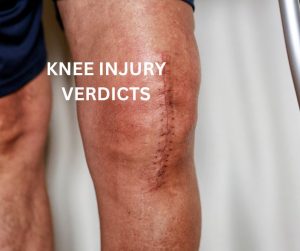 Example 1: Car Accident Leading to Knee Surgery
Example 1: Car Accident Leading to Knee Surgery
- Facts: The plaintiff suffered a significant knee injury in a car accident caused by another driver running a red light. The injury required surgical intervention, specifically an ACL reconstruction.
- Verdict: The jury awarded $200,000. This included $50,000 for medical expenses, $30,000 for lost wages, and $120,000 for pain and suffering. The verdict took into account the clear liability of the at-fault driver and the invasive nature of the knee surgery.
Example 2: Slip and Fall at a Retail Store
- Facts: A customer slipped and fell due to a wet floor in a retail store, suffering a torn meniscus. The store had not placed warning signs around the wet area.
- Verdict: The plaintiff was awarded $80,000, with $20,000 for medical bills, $10,000 for lost wages as the injury resulted in several weeks off work, and $50,000 for pain and suffering. The store was found negligent for not adequately warning customers of the hazard.
Example 3: Workplace Accident Resulting in Chronic Knee Pain
- Facts: An employee sustained a knee injury due to a fall from faulty equipment at work. The injury led to chronic knee pain and long-term mobility issues.
- Verdict: The worker received a settlement of $150,000. This included $40,000 for medical treatment and physical therapy, $20,000 for lost income, and $90,000 for pain and suffering and diminished quality of life. The case highlighted the employer’s failure to maintain safe working conditions.
Example 4: Motorcycle Accident with Multiple Injuries Including Knee Trauma
- Facts: A motorcyclist was hit by a car, resulting in multiple injuries, including a complex knee fracture requiring multiple surgeries.
- Verdict: The motorcyclist was awarded $500,000. This significant sum accounted for extensive medical treatments ($200,000), long-term loss of earning capacity ($150,000), and substantial pain and suffering ($150,000). The high amount reflected the severe and life-altering nature of the injuries.
Example 5: Pedestrian Struck by a Vehicle
- Facts: A pedestrian was struck by a speeding vehicle, resulting in a dislocated knee and subsequent medical complications.
- Verdict: The plaintiff received $300,000 in compensation. The award covered extensive medical expenses, including costs for potential future surgeries ($100,000), lost wages and future earning potential ($50,000), and pain and suffering, particularly given the traumatic nature of the accident ($150,000).
Conclusion
These examples illustrate how knee injury verdicts can vary widely based on the circumstances of the accident, the severity of the injury, and the impact on the victim’s life. They demonstrate the importance of considering all aspects of the injury, from direct medical costs to the more subjective aspects of pain and suffering. In real cases, the specifics of each incident, the quality of legal representation, and the jurisdiction’s legal nuances significantly influence the outcomes. You might also check out our page about T-bone accidents for more info.
Personal Injury Attorney Near Me
Securing a fair settlement for knee surgery following a car accident involves understanding the full scope of your injuries, the costs involved, and the legal nuances of your case. It requires thorough documentation, a clear understanding of your legal rights, and often the guidance of a skilled attorney. Navigating this process effectively is key to ensuring that you receive adequate compensation to cover all your expenses and losses.
Knee Injury Lawyer FAQ
How much is the settlement for arthroscopic surgery?
The settlement amount for arthroscopic surgery resulting from an injury, such as in a personal injury case, varies widely based on several factors. Arthroscopic surgery is a minimally invasive procedure often used to diagnose and treat joint problems, commonly in the knee, shoulder, elbow, and wrist. The cost of the surgery itself and the compensation for associated damages can depend on the specifics of each case. Here are the key factors that influence the settlement amount:
- Medical Expenses: This includes not just the cost of the arthroscopic surgery, but also related medical costs such as pre-surgery consultations, anesthesia, hospital stay, post-surgery care, physical therapy, and any follow-up treatments or rehabilitation.
- Severity and Impact of the Injury: The nature of the injury that necessitated the surgery plays a significant role. A more severe injury that leads to a longer recovery period, or causes more significant pain and suffering, will likely result in a higher settlement.
- Lost Wages and Lost Earning Capacity: If the injury and subsequent surgery result in time off work, lost wages are typically included in the settlement. If there’s an impact on your future ability to work or earn at the same capacity, this future loss should also be factored in.
- Pain and Suffering: Compensation for pain and suffering covers the physical pain and emotional distress caused by the injury and surgery. This is more subjective and can vary depending on how the injury has affected your quality of life.
- Insurance Policy Limits: The settlement may be influenced by the at-fault party’s insurance policy limits, particularly in cases like car accidents.
- Comparative Negligence: If you are found to be partially at fault for the incident that caused your injury, this could reduce the settlement amount in states that follow comparative negligence rules.
- Jurisdiction: Settlement amounts can also vary depending on the state or region, as different places have different laws and standards regarding personal injury settlements.
Given these variables, settlements for arthroscopic surgery can range from a few thousand dollars in cases with minor injuries and quick recoveries, to tens or even hundreds of thousands in more severe cases.
For a more accurate estimate tailored to your specific situation, it’s advisable to consult with a personal injury attorney. They can evaluate your case based on the extent of your injury, the total medical costs, lost wages, and pain and suffering, and negotiate on your behalf to ensure you receive fair compensation.
What is the average settlement for ACL reconstruction?
Determining an average dollar amount for an ACL (anterior cruciate ligament) reconstruction settlement in a personal injury case can be complex, as the settlement amount depends on various factors specific to each case. However, I can provide a general overview of the elements that typically influence these settlements:
- Medical Expenses: The cost of the ACL reconstruction surgery itself is a primary factor. This includes pre-operative care, the surgery, hospital stay, post-operative care, physical therapy, and any future surgeries or treatments needed.
- Severity of the Injury: ACL injuries can range in severity and may involve other knee damage. More severe or complex injuries usually lead to higher settlements.
- Lost Wages and Future Earnings: Compensation for time off work during recovery and any impact on your future earning capacity due to the injury are considered.
- Pain and Suffering: This includes compensation for the physical pain and emotional distress endured due to the injury and subsequent surgery. The calculation for this component is subjective and can vary significantly.
- Long-term Effects: If the ACL injury leads to long-term issues such as chronic pain, limitations in mobility, or a higher likelihood of arthritis, this will increase the settlement amount.
- Insurance Policy Limits: The at-fault party’s insurance coverage can also impact the settlement amount, as there might be limits on the coverage.
- Comparative Fault: In states with comparative negligence laws, if you are found to be partly at fault for the incident that caused the injury, your settlement can be reduced proportionally to your degree of fault.
- Legal Representation: The skill and experience of your attorney in negotiating with insurance companies and presenting your case can significantly affect the settlement amount.
Given these factors, settlements for ACL reconstruction due to an injury in an incident like a car accident or slip and fall can range from moderate sums to much larger amounts. Minor cases might settle for a few thousand dollars, especially if the recovery is quick and complete. More severe cases, particularly those involving long-term disability or chronic pain, can result in settlements in the tens or even hundreds of thousands of dollars.
For a precise estimate, it’s advisable to consult a personal injury attorney who can evaluate your case based on the specifics of your injury and its impact on your life, negotiate with insurance companies, and ensure you receive fair compensation.

 Knee injuries in car accidents can range from ligament tears and fractures to dislocations and cartilage damage. These injuries often occur during frontal collisions or side impacts, where the knees forcefully hit the dashboard or door. Among the most common are Anterior Cruciate Ligament (ACL) tears, meniscus tears, and patella fractures.
Knee injuries in car accidents can range from ligament tears and fractures to dislocations and cartilage damage. These injuries often occur during frontal collisions or side impacts, where the knees forcefully hit the dashboard or door. Among the most common are Anterior Cruciate Ligament (ACL) tears, meniscus tears, and patella fractures. Knee surgery can be a costly affair, encompassing not just the surgery itself but also pre-operative consultations, post-operative care, physical therapy, and potentially long-term rehabilitation. The costs can escalate quickly, especially if additional surgeries or extended rehabilitation are needed.
Knee surgery can be a costly affair, encompassing not just the surgery itself but also pre-operative consultations, post-operative care, physical therapy, and potentially long-term rehabilitation. The costs can escalate quickly, especially if additional surgeries or extended rehabilitation are needed.
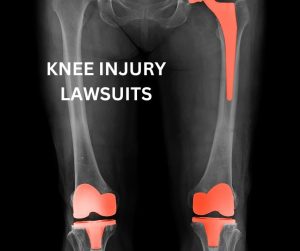
 Example 1: Car Accident Leading to Knee Surgery
Example 1: Car Accident Leading to Knee Surgery